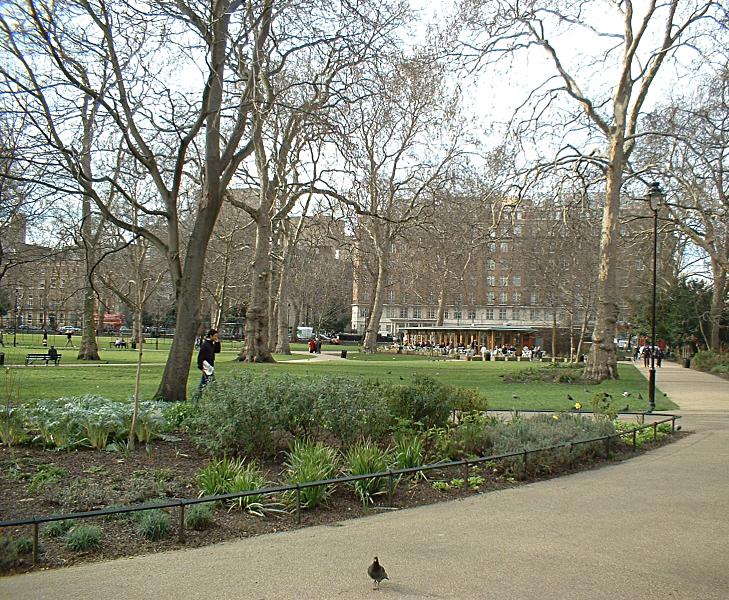|
Russell Square Stabbing
On 3 August 2016, a mass stabbing occurred in Russell Square, London. Six people were stabbed, one fatally, before a suspect, identified as Zakaria Bulhan, was apprehended by police and charged with murder and attempted murder. The media initially linked the stabbing to terrorism, but later shifted its focus to possible mental disorders. Events London's Metropolitan Police Service and London Ambulance Service arrived at the scene of the attacks six minutes after emergency services were called at 22:33. Less than ten minutes later, a man was arrested at the scene after being tasered by police. Victims Six people, apparently selected at random, were stabbed. A 64-year-old American, Darlene Horton, died at the scene. She had planned to fly back to Florida the following day. An American man, a British man, an Australian man, an Australian woman, and an Israeli woman were injured. The British man, Bernard Hepplewhite, underwent emergency surgery for a serious abdominal wound and re ... [...More Info...] [...Related Items...] OR: [Wikipedia] [Google] [Baidu] |
Russell Square
Russell Square is a large garden square in Bloomsbury, in the London Borough of Camden, built predominantly by the firm of James Burton. It is near the University of London's main buildings and the British Museum. Almost exactly square, to the north is Woburn Place and to the south-east is Southampton Row. Russell Square tube station sits to the north-east. It is named after the surname of the Earls and Dukes of Bedford; the freehold remains with the latter's conservation trusts who have agreed public access and management by Camden Council. The gardens are in the mainstream, initial category (of Grade II listing) on the Register of Historic Parks and Gardens. In 2005, two terrorist bombings occurred nearby; one on a tube train between Kings Cross St Pancras and Russell Square, the other on a bus (Route 30, on diversion) outside the HQ of the British Medical Association on Tavistock Square. In condolence and commemoration the public and public institutions laid flowers at both ... [...More Info...] [...Related Items...] OR: [Wikipedia] [Google] [Baidu] |
South Thames College
South Thames Colleges Group (STCG) is a large further education institution operating four colleges in south-west London: South Thames College, Kingston College, Merton College, and Carshalton College. The four main campuses are in Wandsworth, Kingston upon Thames, Morden and Carshalton. History It was formed in 2017 following the merger between South Thames College and Merton College with Kingston College and Carshalton College. South Thames College South Thames College was founded in 1895. South Thames College is the largest provider of post-16 study and training in the London Borough of Wandsworth Carshalton College Carshalton College opened as Carshalton Technical Institute in 1954. In 2012 it entered into a federation with Kingston College. Merton College Merton College has existed since around 1890. A new building was erected in 1971 with additional blocks in later years. It formerly occupied a site on Central Road in the borough, which was sold to Barratt Homes, a hou ... [...More Info...] [...Related Items...] OR: [Wikipedia] [Google] [Baidu] |
Mass Stabbings In The United Kingdom
Mass is an intrinsic property of a body. It was traditionally believed to be related to the quantity of matter in a physical body, until the discovery of the atom and particle physics. It was found that different atoms and different elementary particles, theoretically with the same amount of matter, have nonetheless different masses. Mass in modern physics has multiple definitions which are conceptually distinct, but physically equivalent. Mass can be experimentally defined as a measure of the body's inertia, meaning the resistance to acceleration (change of velocity) when a net force is applied. The object's mass also determines the strength of its gravitational attraction to other bodies. The SI base unit of mass is the kilogram (kg). In physics, mass is not the same as weight, even though mass is often determined by measuring the object's weight using a spring scale, rather than balance scale comparing it directly with known masses. An object on the Moon would weigh less t ... [...More Info...] [...Related Items...] OR: [Wikipedia] [Google] [Baidu] |
2010s Crimes In London
1 (one, unit, unity) is a number representing a single or the only entity. 1 is also a numerical digit and represents a single unit of counting or measurement. For example, a line segment of ''unit length'' is a line segment of length 1. In conventions of sign where zero is considered neither positive nor negative, 1 is the first and smallest positive integer. It is also sometimes considered the first of the infinite sequence of natural numbers, followed by 2, although by other definitions 1 is the second natural number, following 0. The fundamental mathematical property of 1 is to be a multiplicative identity, meaning that any number multiplied by 1 equals the same number. Most if not all properties of 1 can be deduced from this. In advanced mathematics, a multiplicative identity is often denoted 1, even if it is not a number. 1 is by convention not considered a prime number; this was not universally accepted until the mid-20th century. Additionally, 1 is the s ... [...More Info...] [...Related Items...] OR: [Wikipedia] [Google] [Baidu] |
August 2016 Events In The United Kingdom
August is the eighth month of the year in the Julian and Gregorian calendars, and the fifth of seven months to have a length of 31 days. Its zodiac sign is Leo and was originally named ''Sextilis'' in Latin because it was the 6th month in the original ten-month Roman calendar under Romulus in 753 BC, with March being the first month of the year. About 700 BC, it became the eighth month when January and February were added to the year before March by King Numa Pompilius, who also gave it 29 days. Julius Caesar added two days when he created the Julian calendar in 46 BC (708 AUC), giving it its modern length of 31 days. In 8 BC, it was renamed in honor of Emperor Augustus. According to a Senatus consultum quoted by Macrobius, he chose this month because it was the time of several of his great triumphs, including the conquest of Egypt. Commonly repeated lore has it that August has 31 days because Augustus wanted his month to match the length of Julius Caesar's July, but ... [...More Info...] [...Related Items...] OR: [Wikipedia] [Google] [Baidu] |
August 2016 Crimes In Europe
August is the eighth month of the year in the Julian and Gregorian calendars, and the fifth of seven months to have a length of 31 days. Its zodiac sign is Leo and was originally named ''Sextilis'' in Latin because it was the 6th month in the original ten-month Roman calendar under Romulus in 753 BC, with March being the first month of the year. About 700 BC, it became the eighth month when January and February were added to the year before March by King Numa Pompilius, who also gave it 29 days. Julius Caesar added two days when he created the Julian calendar in 46 BC (708 AUC), giving it its modern length of 31 days. In 8 BC, it was renamed in honor of Emperor Augustus. According to a Senatus consultum quoted by Macrobius, he chose this month because it was the time of several of his great triumphs, including the conquest of Egypt. Commonly repeated lore has it that August has 31 days because Augustus wanted his month to match the length of Julius Caesar's July, but t ... [...More Info...] [...Related Items...] OR: [Wikipedia] [Google] [Baidu] |



